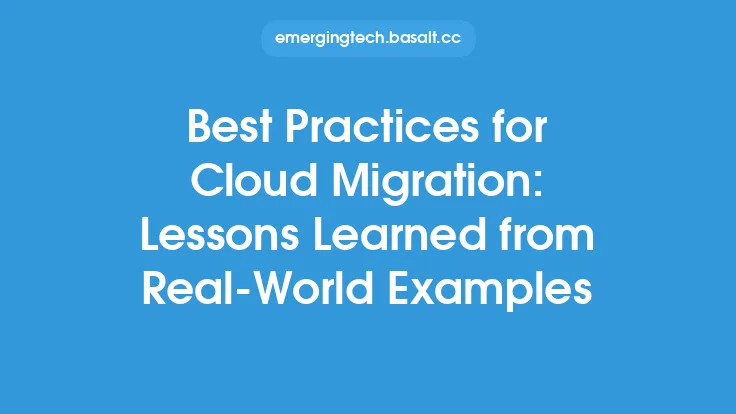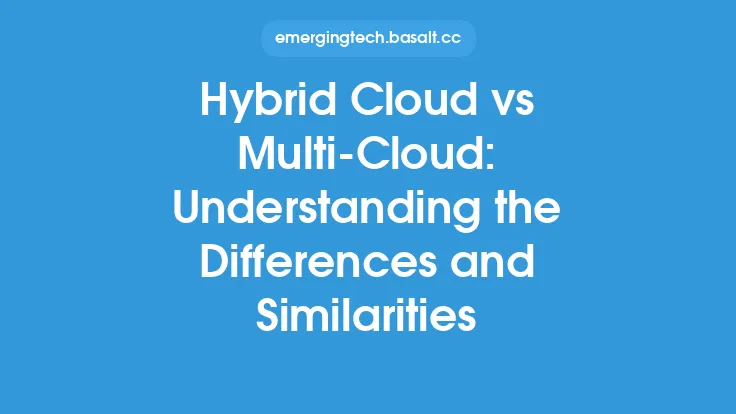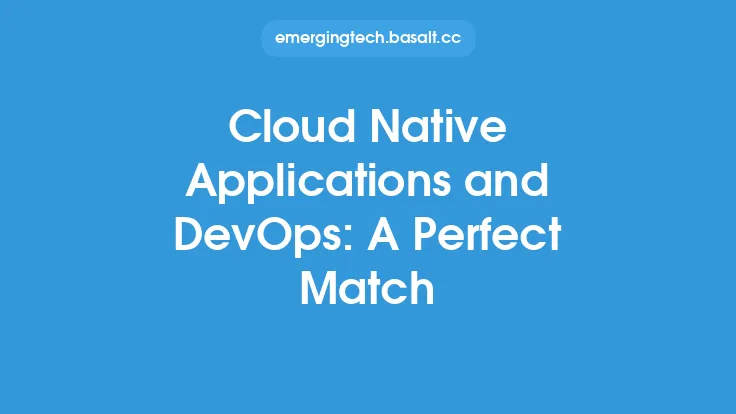The concept of hybrid cloud has been gaining traction in recent years, and for good reason. By combining the benefits of public and private cloud infrastructure, organizations can create a flexible, scalable, and cost-effective IT environment that meets their unique needs. But what does this look like in practice? In this article, we'll explore real-world examples and applications of hybrid cloud use cases, highlighting the ways in which organizations are leveraging this technology to drive innovation and success.
Introduction to Hybrid Cloud Use Cases
Hybrid cloud use cases are diverse and varied, spanning industries and applications. At their core, they involve the integration of public and private cloud infrastructure to create a seamless, scalable, and secure IT environment. This can involve using public cloud services for certain workloads, while keeping others on-premises or in a private cloud. The key is to create a flexible and dynamic infrastructure that can adapt to changing business needs.
Real-World Examples of Hybrid Cloud Use Cases
So, what do hybrid cloud use cases look like in practice? Here are a few examples:
- Disaster Recovery: A financial services company uses a public cloud provider for disaster recovery, while keeping its core banking applications on-premises. This allows the company to ensure business continuity in the event of an outage, while also reducing the cost and complexity of its disaster recovery infrastructure.
- Data Analytics: A retail company uses a public cloud provider for data analytics, while keeping its transactional data on-premises. This allows the company to leverage the scalability and flexibility of the public cloud for data-intensive workloads, while also maintaining control over its sensitive data.
- DevOps: A software development company uses a hybrid cloud environment to support its DevOps workflow. Developers can use public cloud services for testing and development, while production workloads are deployed on-premises or in a private cloud. This allows the company to accelerate its development cycle, while also maintaining control over its production environment.
Applications of Hybrid Cloud
Hybrid cloud use cases are not limited to specific industries or applications. Instead, they can be applied to a wide range of scenarios, including:
- Cloud Bursting: Cloud bursting involves using public cloud services to supplement on-premises infrastructure during periods of high demand. This can be useful for applications that experience variable workloads, such as e-commerce sites or online gaming platforms.
- Data Integration: Hybrid cloud environments can be used to integrate data from multiple sources, including on-premises and cloud-based applications. This can be useful for organizations that need to combine data from different systems, such as customer relationship management (CRM) and enterprise resource planning (ERP) systems.
- Security and Compliance: Hybrid cloud environments can be used to support security and compliance requirements, such as data encryption and access controls. This can be useful for organizations that need to protect sensitive data, such as financial institutions or healthcare providers.
Technical Considerations for Hybrid Cloud Use Cases
While hybrid cloud use cases offer many benefits, they also require careful planning and execution. Here are some technical considerations to keep in mind:
- Network Connectivity: Hybrid cloud environments require reliable and secure network connectivity between on-premises and cloud-based infrastructure. This can involve using virtual private networks (VPNs), dedicated network connections, or other technologies to ensure seamless communication between systems.
- Security and Identity: Hybrid cloud environments require robust security and identity management controls to ensure that data and applications are protected. This can involve using technologies such as encryption, firewalls, and access controls to safeguard sensitive information.
- Data Management: Hybrid cloud environments require careful data management to ensure that data is properly stored, processed, and retrieved. This can involve using data management technologies such as data lakes, data warehouses, and cloud-based storage services.
Best Practices for Implementing Hybrid Cloud Use Cases
To get the most out of hybrid cloud use cases, organizations should follow best practices such as:
- Assessing Business Requirements: Organizations should carefully assess their business requirements and identify areas where hybrid cloud can add value.
- Developing a Cloud Strategy: Organizations should develop a comprehensive cloud strategy that outlines their goals, objectives, and timelines for implementing hybrid cloud.
- Selecting the Right Cloud Provider: Organizations should carefully select a cloud provider that meets their needs and requirements, taking into account factors such as scalability, security, and cost.
- Ensuring Integration and Interoperability: Organizations should ensure that their hybrid cloud environment is properly integrated and interoperable, using technologies such as APIs, messaging queues, and data integration tools to facilitate communication between systems.
Conclusion
Hybrid cloud use cases offer a powerful way for organizations to drive innovation and success in today's fast-paced digital landscape. By combining the benefits of public and private cloud infrastructure, organizations can create a flexible, scalable, and cost-effective IT environment that meets their unique needs. Whether it's disaster recovery, data analytics, or DevOps, hybrid cloud use cases can be applied to a wide range of scenarios, offering a range of benefits and advantages. By following best practices and carefully planning and executing their hybrid cloud strategy, organizations can unlock the full potential of this technology and achieve their business goals.





